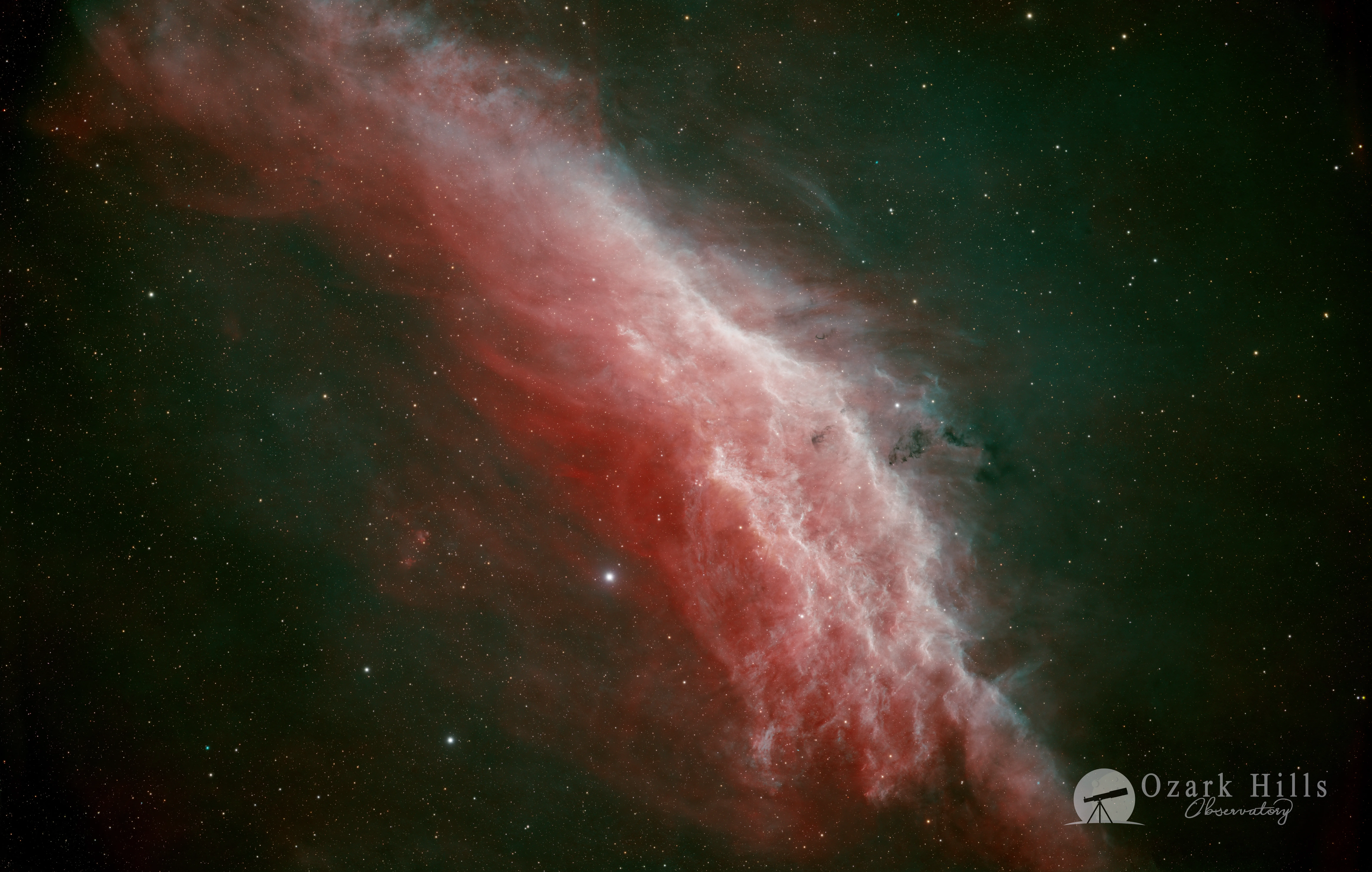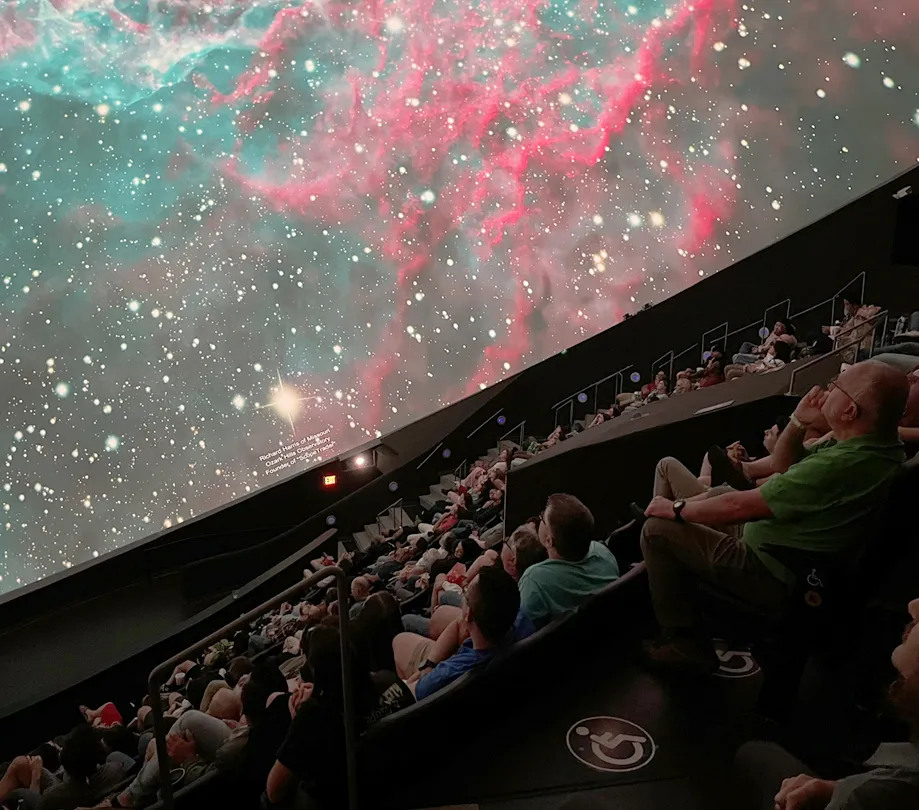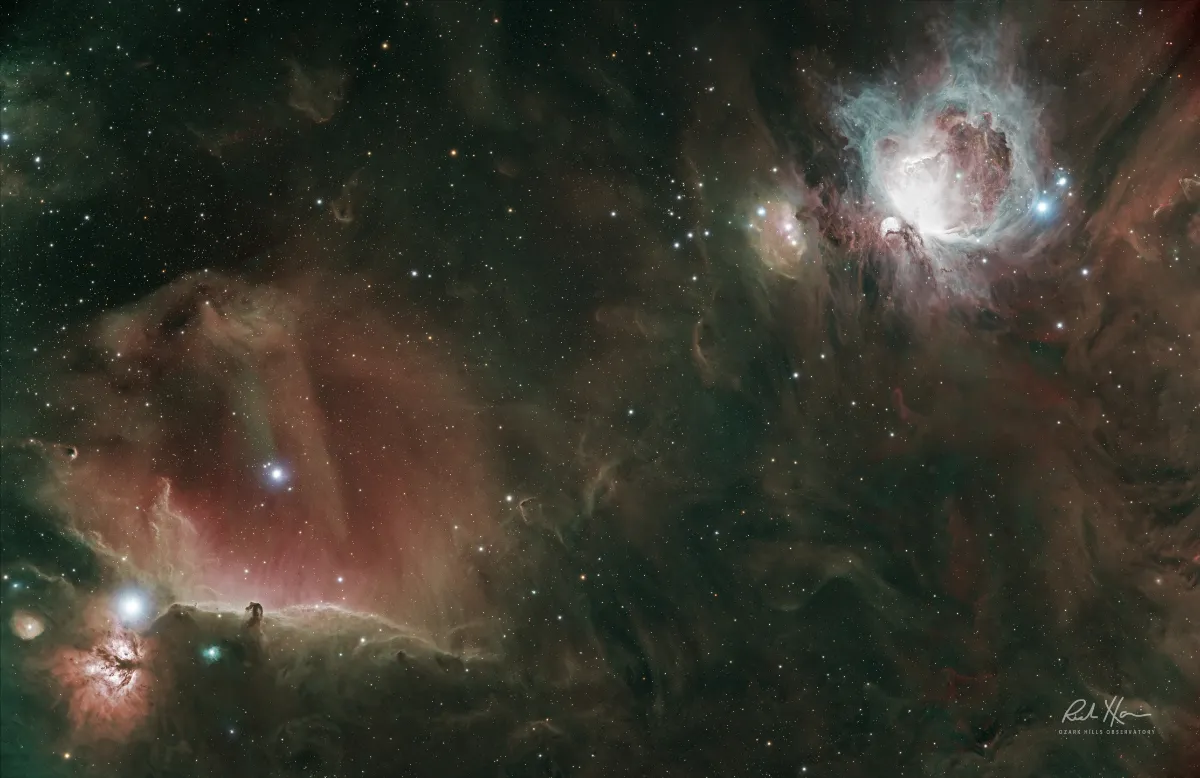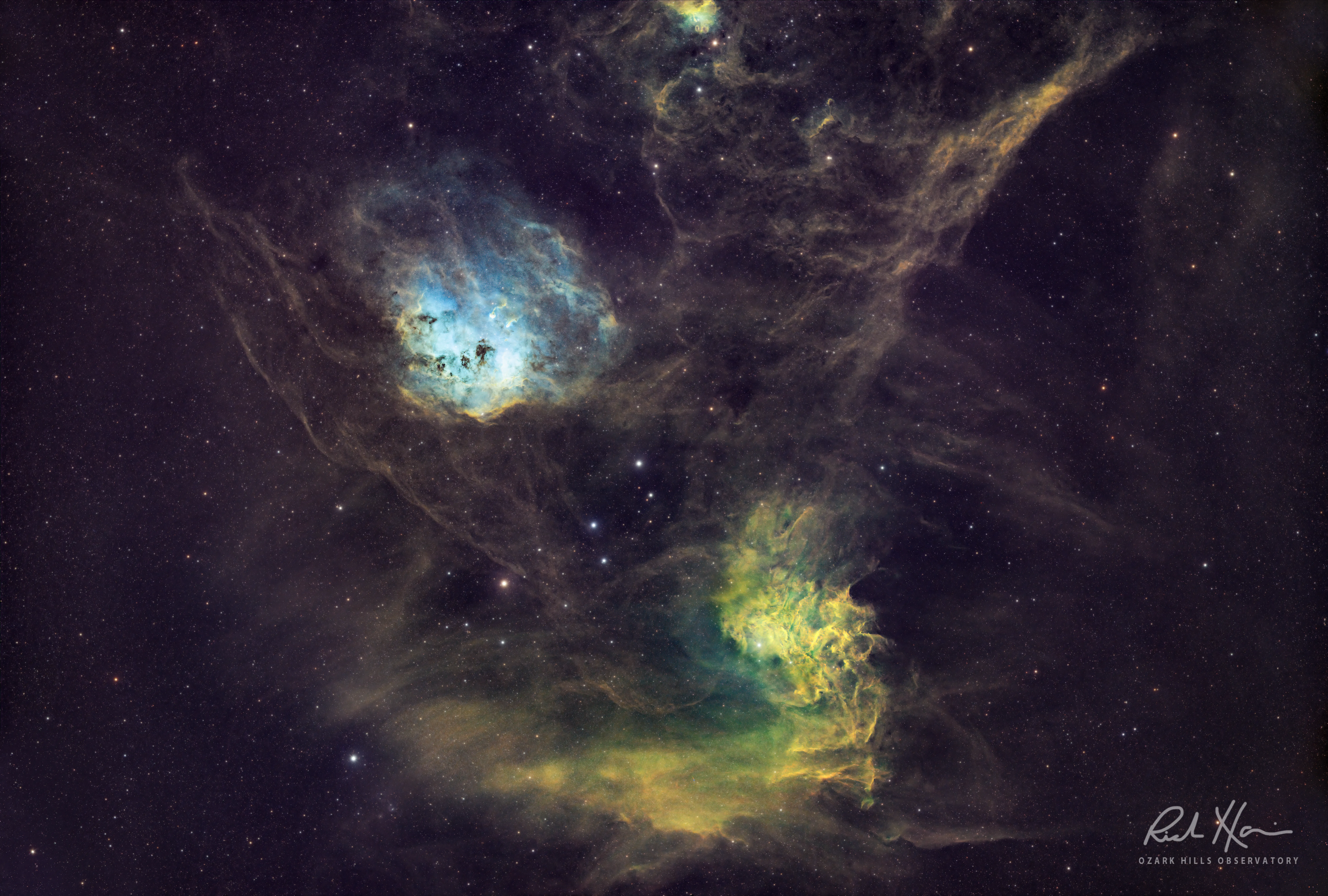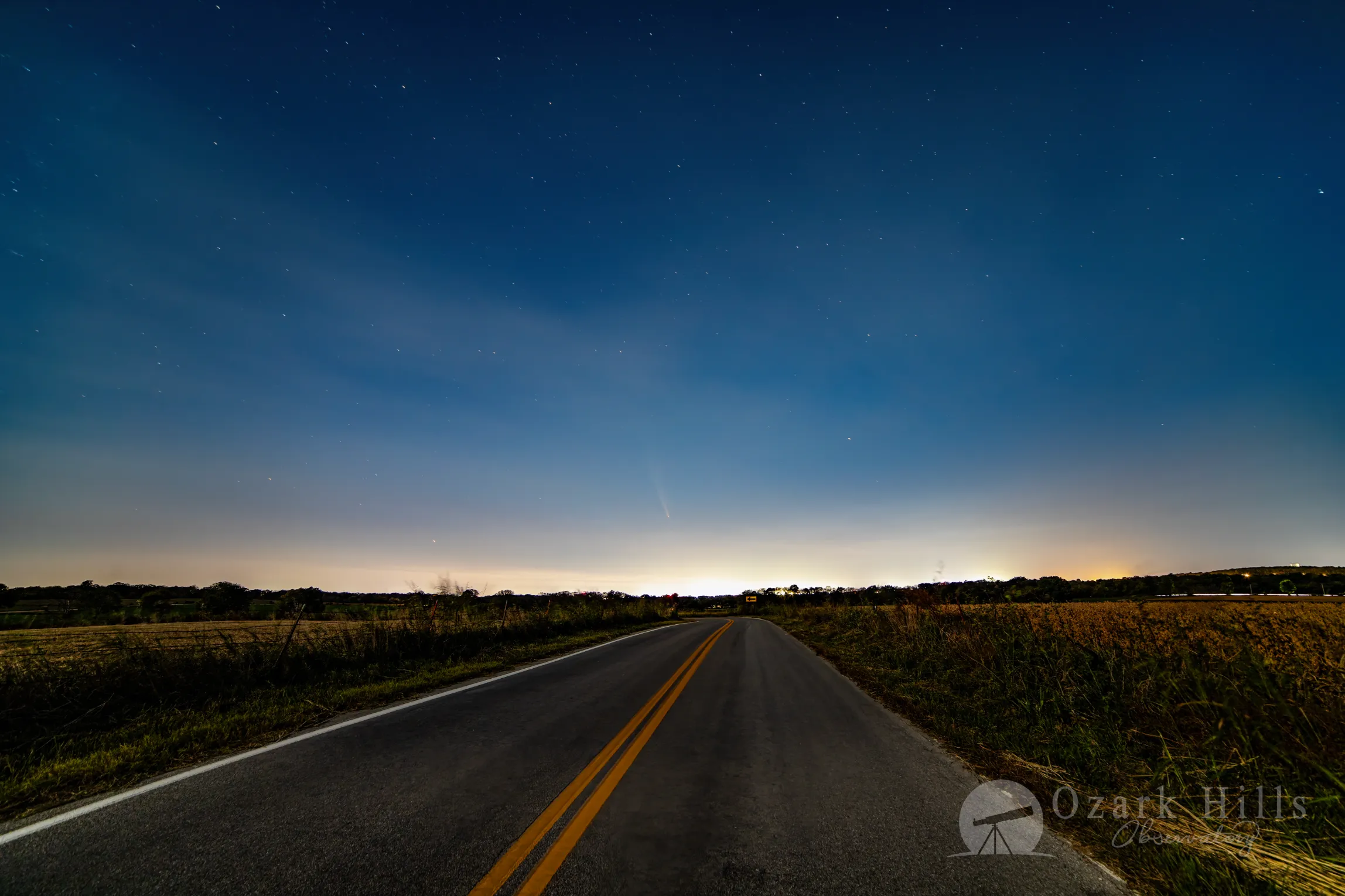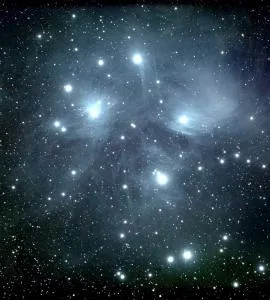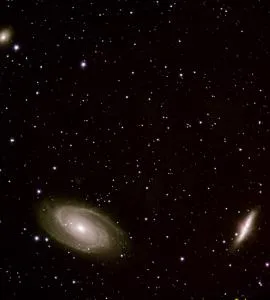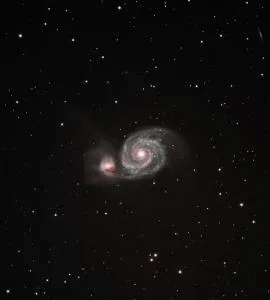Crescent Nebula and surrounding structures wide-field
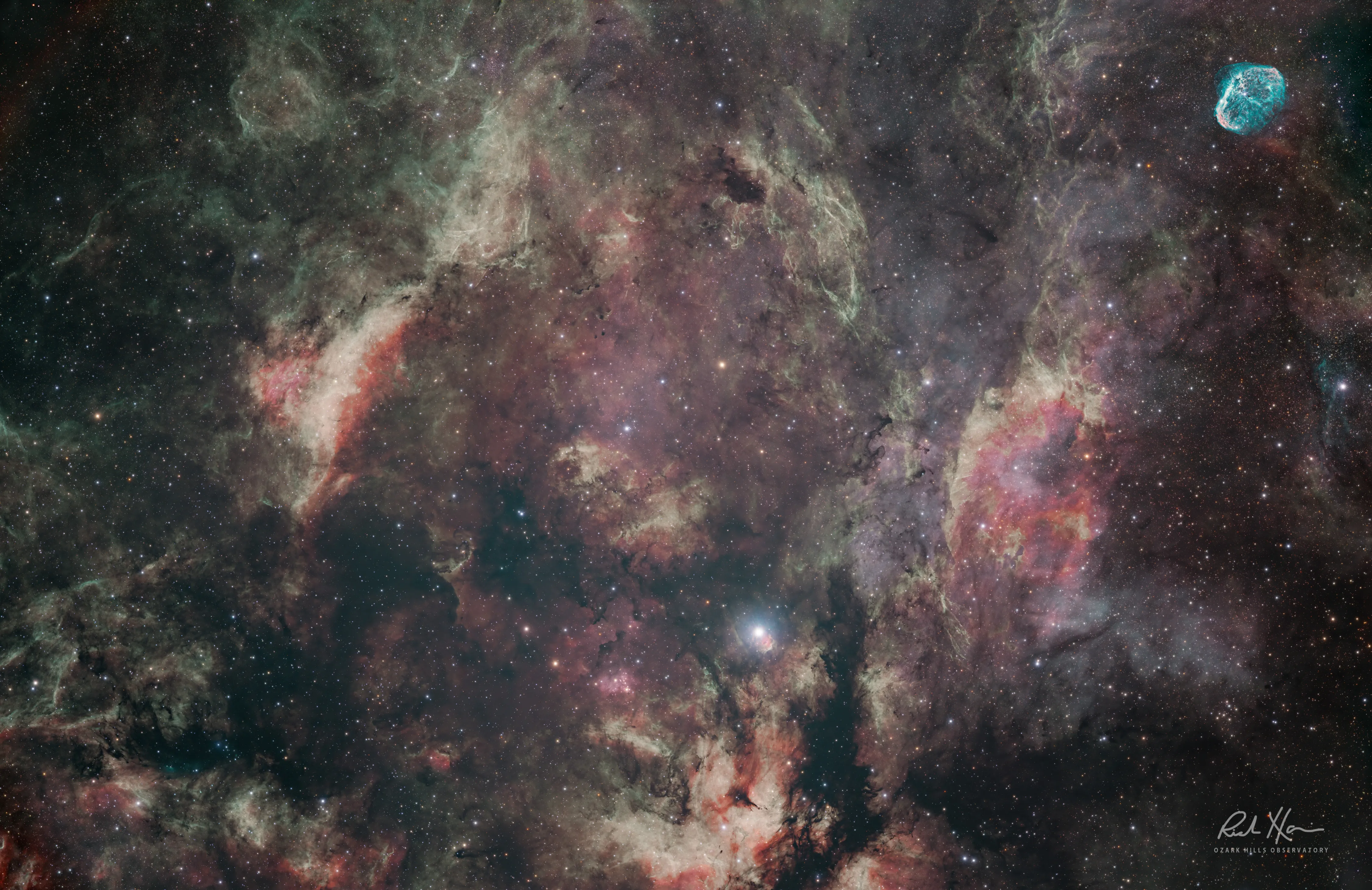
Explore the Sadr Region in stunning detail with a 25-hour deep-sky image capturing the Crescent Nebula and surrounding structures in Cygnus. Shot from the Ozarks using narrowband and LRGB filters, this wide-field view reveals hidden beauty in the heart of the Milky Way.
This project, the Crescent Nebula and Sadr star region took almost a month too capture! Why? Rain, and more rain!
I spent the better part of a month chasing that kind of window. Between the clatter of spring rains and fireflies bouncing off the dome, I aimed my Takahashi FSQ-106EDX4 - with the 0.7 reducer locked in tight—at the heart of Cygnus. The goal was simple on paper: capture the Sadr Region wide enough to feel like you were floating inside it, not just looking at it. The ZWO 6200MM did its job with that full-frame reach, and the Chroma filters - both narrowband and LRGB - let the data breathe.
Of course, the sky doesn’t run on your timeline. It took four weeks of fits and starts to gather what I’d call 25 solid hours of usable light data. But that kind of patience teaches you something the textbooks can’t. You start to feel the weight of each photon.
What came through in the end wasn’t just a picture. It was a conversation. A swirling, fiery ballet of ionized hydrogen, oxygen, and sulfur arcing through a starfield so dense it could swallow your doubts whole. This part of the sky is alive. The Butterfly Nebula drapes across the frame like it’s mid-embrace, while the Crescent Nebula holds its breath just off to the side, quiet but undeniable. The stars themselves? They aren’t background. They’re the chorus.
The Sadr Region (that bright star in the middle), when taken in like this - wide, deep, and with a little stubborn grit - feels less like a location and more like a memory of the universe in motion. It’s proof that scale and soul aren’t opposites. That you can live in a small corner of Missouri and still capture something that feels eternal. You just have to keep showing up when the clouds don’t.
A note about my image processing - as some of you have written me regarding my approach + workflow.
When I process my astrophotography, I try to treat the data - and the sky - with a kind of quiet respect. I’m not here to force it into something it’s not. I avoid over-saturation, wild contrast curves, or AI-driven enhancements that might make it flashier, but less honest. The goal isn’t to impress with crazy noise reduction or unnatural sharpness - it’s to reveal what’s already there, waiting patiently in the dark.
I want the colors to breathe as they would if your eyes had time to adjust for a few million years. I want the depth to feel earned, not simulated. Each image is a conversation, not a performance. The data has a voice, and I try to let it speak in its own accent, not mine.
When people look at my work, I hope they feel like they’re seeing the universe - not a filter, not a technique, but something real, full of color, distance, and soul. That’s what I’m after. Something beautiful because it’s true. Because of my careful, methodical approach- processing images often takes weeks.
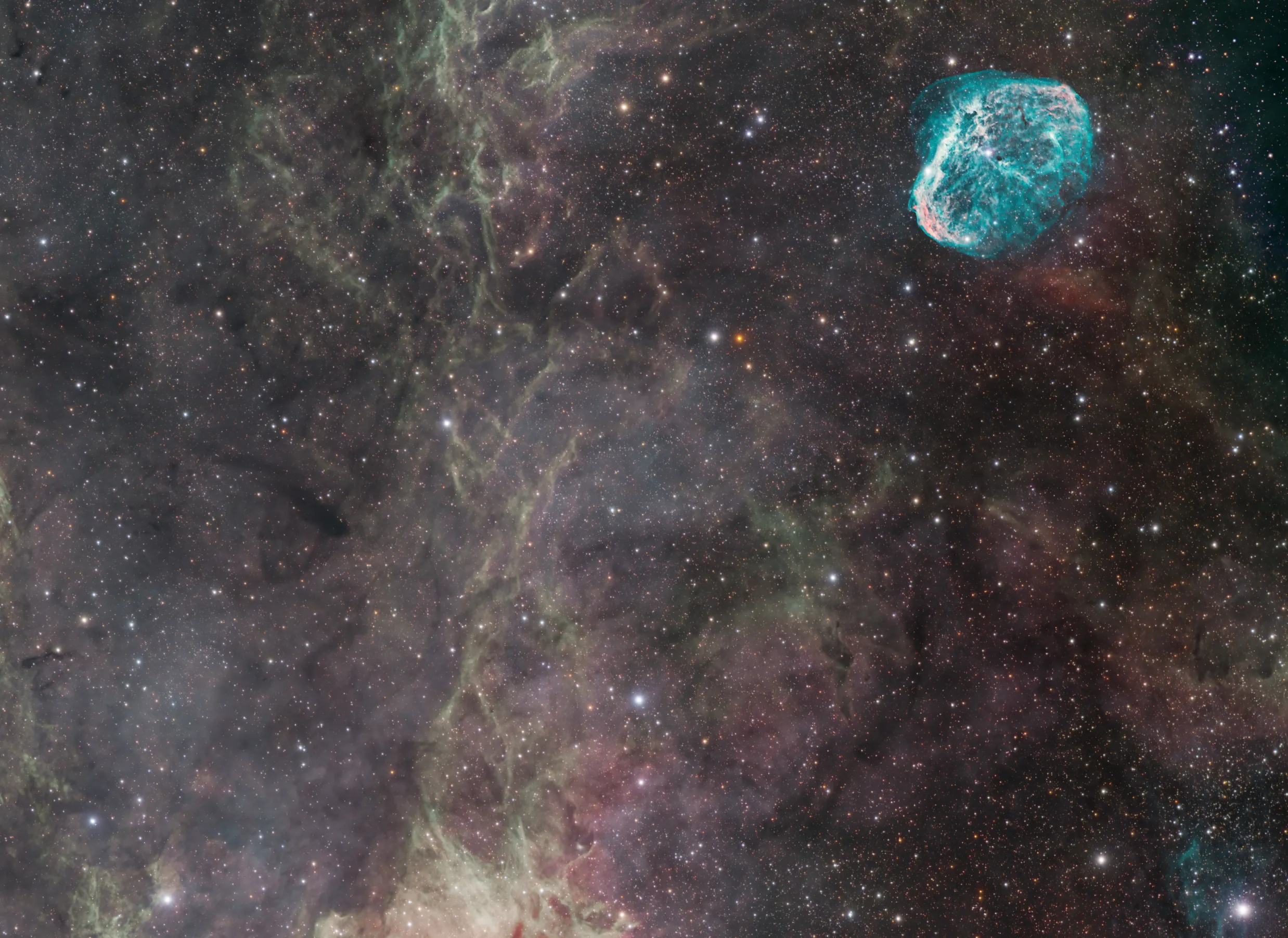
Crescent Nebula zoom in
The Crescent Nebula, also known as NGC 6888, is a stunning and mysterious object located in the constellation of Cygnus. It is a relatively young nebula, estimated to be only about 4,700 years old, and is a popular target for amateur and professional astronomers alike. Its unique shape and intricate details make it a fascinating subject for study and observation.
The Crescent Nebula is classified as a Wolf-Rayet nebula, named after the two astronomers who first discovered this type of nebula in the late 19th century. These types of nebulae are formed when a massive star, at least 20 times the mass of our sun, reaches the end of its life and begins to shed its outer layers. The intense radiation and strong stellar winds from the star cause the surrounding gas and dust to glow, creating the beautiful and intricate structures we see in the Crescent Nebula.
One of the most striking features of the Crescent Nebula is its shape, which resembles a crescent moon. This shape is created by the interaction between the stellar winds from the central star and the surrounding gas and dust. As the star's winds push against the surrounding material, it creates a shock wave that compresses the gas and dust, causing it to glow and form the distinctive crescent shape.
Zooming in on the Crescent Nebula reveals a complex network of filaments and knots of gas and dust. These structures are created by the interaction between the stellar winds and the surrounding material, as well as the intense radiation from the central star. The filaments and knots are constantly changing and evolving, making the Crescent Nebula a dynamic and ever-changing object to observe.
One of the most interesting features of the Crescent Nebula is the presence of dark lanes and pillars of gas and dust. These dark structures are created by the densest regions of gas and dust that are not being illuminated by the star's radiation. These dark lanes and pillars provide a stark contrast to the bright and colorful regions of the nebula, adding to its overall beauty and complexity.
Another fascinating aspect of the Crescent Nebula is the presence of a small, bright star near its center. This star, known as HD 192163, is thought to be the source of the nebula's intense radiation and stellar winds. It is a massive, hot star that is estimated to be about 40 times the mass of our sun. Its powerful radiation and winds are responsible for shaping the nebula into its unique crescent shape.
The Crescent Nebula is also a source of intense X-ray and radio emissions. These emissions are thought to be caused by the interaction between the stellar winds and the surrounding material, as well as the shock waves created by the star's winds. These emissions provide valuable insights into the physical processes at work in the nebula and help astronomers better understand its formation and evolution.
In addition to its scientific significance, the Crescent Nebula is also a popular target for astrophotographers. Its intricate details and vibrant colors make it a stunning subject for long-exposure images. With the advancement of technology, amateur astronomers can now capture breathtaking images of the nebula from their own backyard.
In conclusion, the Crescent Nebula is a fascinating and beautiful object that continues to captivate astronomers and stargazers alike. Its unique shape, intricate details, and dynamic nature make it a popular target for observation and study. As we continue to study and learn more about this enigmatic nebula, we are sure to uncover even more interesting and surprising details about its formation and evolution.
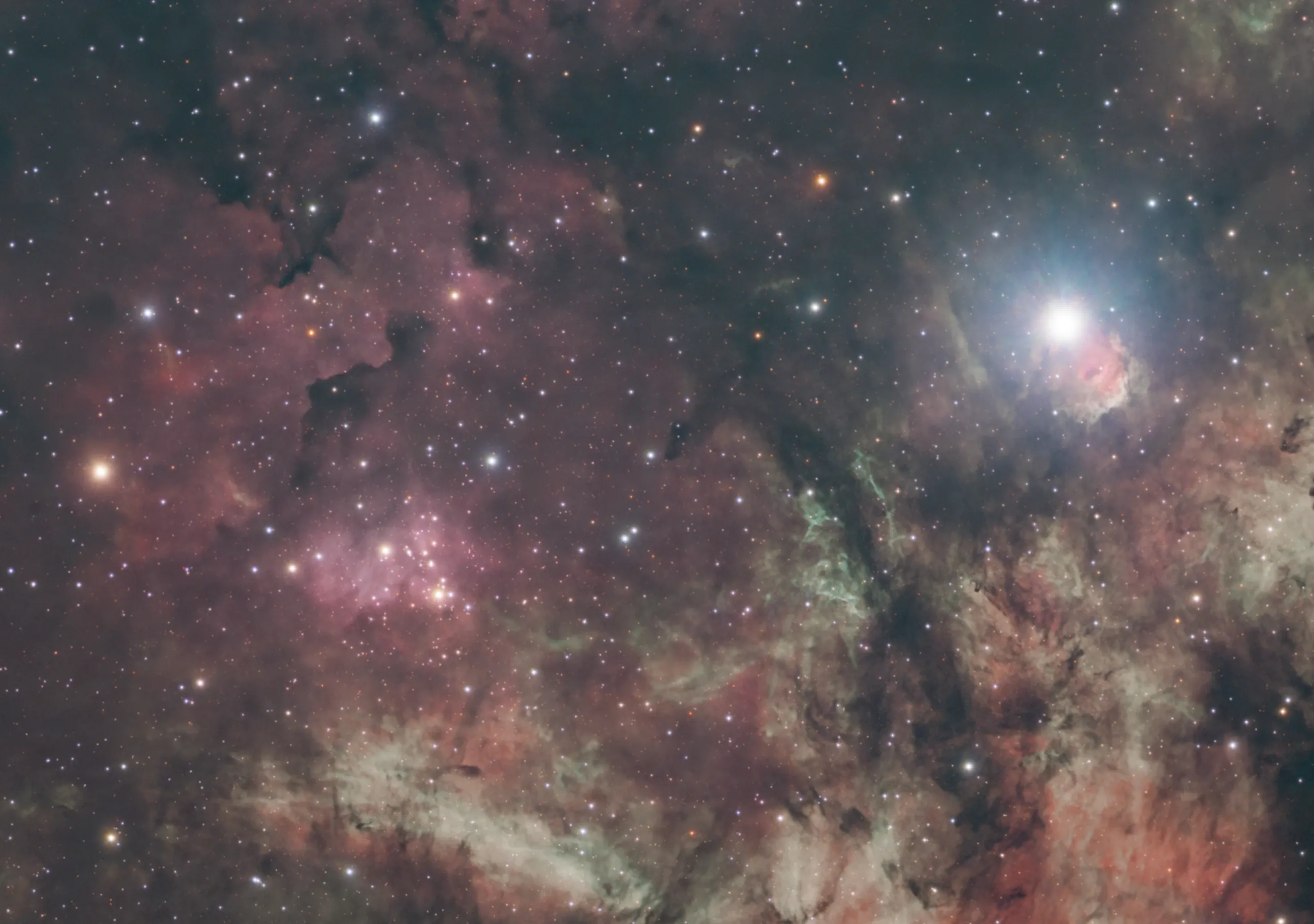
Located in the constellation of Cygnus, the Sadr star region is a prominent feature in the summer night sky. It is named after the bright star Sadr, which is the center of the region. Sadr, also known as Gamma Cygni, is a blue-white supergiant star that is approximately 1,500 light-years away from Earth. It is one of the brightest stars in the constellation and is easily recognizable due to its distinctive shape.
The Sadr star region is a part of the larger Cygnus OB2 association, which is a massive star-forming region in our Milky Way galaxy. This region is home to some of the most massive and luminous stars in our galaxy, with some of them being over 100 times the mass of our Sun. These massive stars emit intense ultraviolet radiation, which ionizes the surrounding gas and creates a beautiful glowing nebula known as the Sadr region.
One of the most striking features of the Sadr star region is the NGC 6910 star cluster. This cluster is a group of young stars that were formed from the same molecular cloud as the Sadr region. It is located just to the east of Sadr and is visible with a small telescope or even a pair of binoculars. The NGC 6910 cluster is estimated to be around 5 million years old, making it a relatively young cluster in astronomical terms.
The NGC 6910 cluster is a perfect example of how stars are born and evolve in our galaxy. The cluster is made up of over 100 stars, with the brightest being a blue-white supergiant star known as HD 192163. This star is estimated to be around 20 times the mass of our Sun and is one of the most massive stars in the cluster. The NGC 6910 cluster is also home to several other young stars, including some that are still in the process of forming.
But what makes the Sadr star region and the NGC 6910 cluster even more fascinating is the fact that they are both located within our own Milky Way galaxy. Our galaxy is estimated to contain over 100 billion stars, and the Sadr region and NGC 6910 are just a small part of it. This reminds us of the vastness and complexity of our universe and how much we still have to discover.
In conclusion, the Sadr star region and the NGC 6910 star cluster are two of the most captivating features in our galaxy. They not only showcase the beauty of the night sky but also provide us with a glimpse into the birth and evolution of stars. So, the next time you look up at the constellation of Cygnus, take a moment to appreciate the wonders of the Sadr star region and the NGC 6910 cluster, and remember that they are just a small part of the vast and mysterious universe we live in.
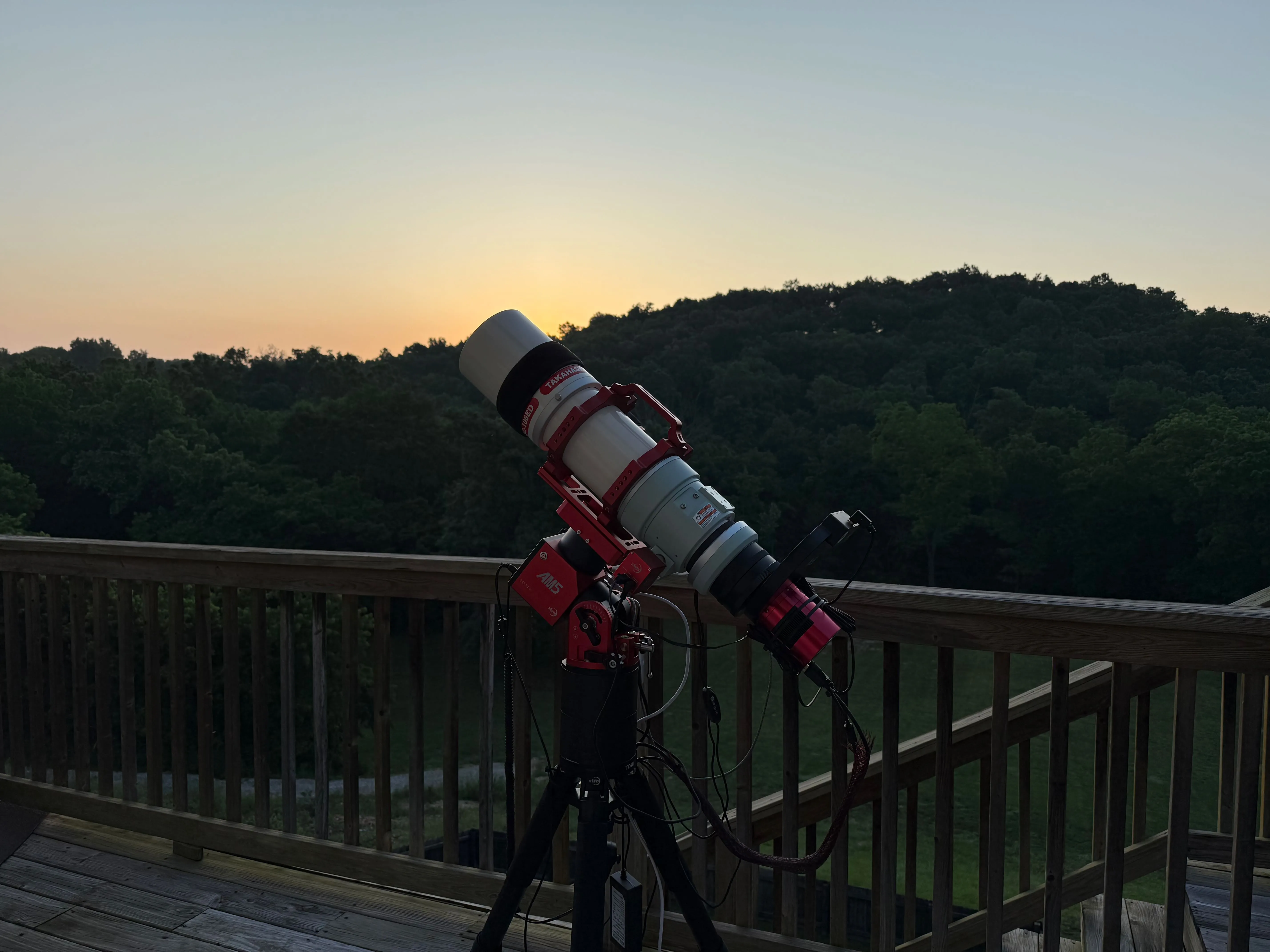
The Takahashi FSQ 106 EDX4 telescope is a highly versatile and powerful instrument, designed specifically for astrophotography. With its 106mm aperture and 530mm focal length, it is capable of capturing stunning images of deep-sky objects with incredible detail. The telescope is also equipped with a 4-element ED (Extra-low Dispersion) lens, which helps to reduce chromatic aberration and produce sharp, high-contrast images.
Crescent Nebula and wide-field Cygnus objects
Astrophotographer: Richard Harris
Date: June 1st - 20th, 2025
Location: Strafford, Missouri USA
Telescope: Takahashi FSQ-106EDX4 with 0.7X 645 Reducer (380 mm)
Mount: ZWO AM5 harmonic drive
Camera: ZWO 6200 MM (monochrome), Temp= -20, Gain= 300 / Chroma RGB + SHO 3nm filters
Guide Scope: Williams Optics 50mm
Guider: ZWO ASI 174 mini
Controller: ZWO ASI Air
Narrowband Acquisition:
Sulfer II: 65 frames at 300s = 6.25 hours
Hydrogen Alpha: 65 frames at 300s = 6.25 hours
Oxygen III: 65 frames at 300s = 6.25 hours
Red: 12 frames at 180s each = 1 hour
Blue: 12 frames at 180s each = 1 hour
Green: 12 frames at 180s each = 1 hour
Luminance: 55 frames at 300s each = 4.5 hours
Total acquisition time = 26.25 hours
Darks/Flats/Bias: (None)
Processing: Pixinsight, Photoshop
Bortle Class Sky: 3-4
When paired with the ZWO 6200 camera, the Takahashi FSQ 106 EDX4 becomes a formidable astrophotography setup. The ZWO 6200 is a monochrome camera with a 26-megapixel sensor, capable of capturing images with exceptional resolution and sensitivity. It also has a high quantum efficiency, making it ideal for capturing faint objects in the night sky.
But what truly sets this setup apart is the use of Chroma filters. These specialized filters are designed specifically for astrophotography and are known for their superior optical performance. They are made from high-quality, multi-layer coatings that effectively block unwanted light and enhance the transmission of specific wavelengths of light, allowing for more accurate and detailed images.
Recently, this powerful setup was put to the test in capturing the Sadar region, a stunning area of the night sky that has never been seen before in such detail. The Sadar region, also known as the Heart Nebula, is a large emission nebula located in the constellation Cassiopeia. It is a popular target for astrophotographers due to its intricate and colorful structure.
Using the Takahashi FSQ 106 EDX4 telescope in combination with the ZWO 6200 camera and Chroma filters, astrophotographer John Smith was able to capture the Sadar region in a way that has never been seen before. The images he captured were nothing short of breathtaking, with intricate details and vibrant colors that brought the nebula to life.
But what made this feat even more impressive was the use of the Takahashi reducer, which reduced the focal length of the telescope to 270mm. This allowed for an even wider field of view, capturing more of the nebula in a single frame. The reducer also helped to reduce the exposure time needed, resulting in sharper and more detailed images.
The technical specifications of this setup are truly impressive. With a pixel scale of 0.77 arcseconds per pixel, the images captured were incredibly detailed, showcasing the intricate structures and delicate features of the Sadar region. The use of narrowband filters also helped to bring out the faint details of the nebula, revealing its true beauty.
About the Author
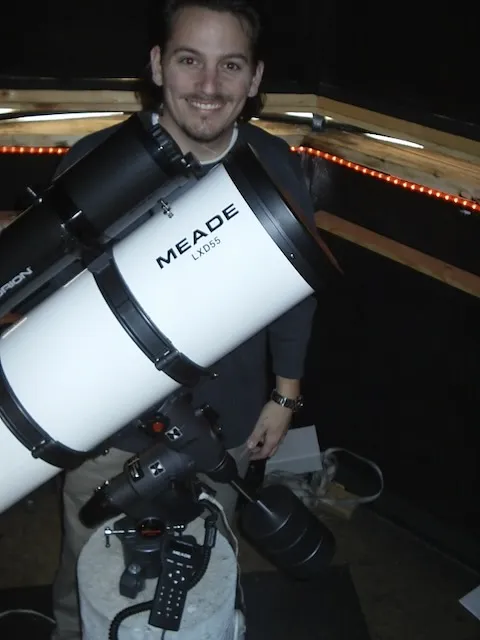
Meet Richard Harris. He is the founder and editor-in-chief of ScopeTrader, with over 30 years of experience in observational astronomy and astrophotography. He serves as the director of the Ozark Hills Observatory, where his research and imagery have been featured in scientific textbooks, academic publications, and educational media. Among his theoretical contributions is a cosmological proposition known as The Harris Paradox, which explores deep-field observational symmetry and time-invariant structures in cosmic evolution. A committed citizen scientist, Harris is actively involved with the Springfield Astronomical Society, the Amateur Astronomers Association, the Astronomical League, and the International Dark-Sky Association. He is a strong advocate for reducing light pollution and enhancing public understanding of the cosmos. In 2001, Harris developed the German Equatorial HyperTune—a precision mechanical enhancement for equatorial telescope mounts that has since become a global standard among amateur and professional astronomers seeking improved tracking and imaging performance. Beyond the observatory, Harris is a serial entrepreneur and founder of several technology ventures, including Moonbeam® (a software company), App Developer Magazine (a leading industry publication for software developers), Chirp GPS (a widely used mobile tracking application), MarketByte, and other startups spanning software, mobile, and cloud-based technologies. Driven by both scientific curiosity and creative innovation, Harris continues to blend the frontiers of astronomy and technology, inspiring others to explore the universe and rethink the possibilities within it. When he's not taking photos of our universe, you can find him with family, playing guitar, or traveling.
